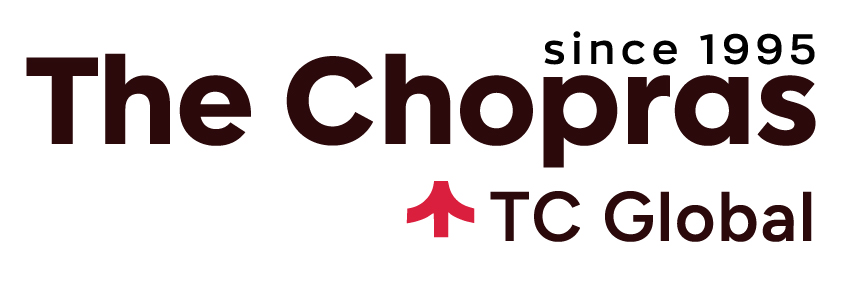In the battle of the Ivies, one of the crucial debates is Princeton vs Columbia. The two great universities are often assessed in a head-to-head competition regarding academic excellence and rigour.
Princeton University (nicknamed the Tigers) is a private, Ivy League research university in Princeton, New Jersey. Established in 1746, it is the fourth oldest institution of higher education in the United States and has been awarding degrees since before the American Revolution. A highly selective university, Princeton ranks first in the country according to rankings published by U.S. News and 25th in the world according to QS World University Rankings 2025. Known for its distinctive commitment to undergraduate education and service, Princeton has established itself as one of the foremost institutions in the world.
Columbia University (nicknamed the Lions) is also a private, Ivy League, research university located in New York City. With a history that can be traced back to 1754, Columbia is also one of America’s historically prestigious and highly selective universities. Ranked 23rd in the world by QS World University ranking and 12th in the country by US News and World Report, Columbia has a core curriculum emphasising a comprehensive liberal arts education. One of the world’s most important centres for research, the university is a proud host of renowned researchers and scholars, expert faculty, and a vibrant student community.
Here is how the two schools stand apart. This article covers –
Princeton vs Columbia: A Quick Glance

Here is a quick look at what sets these two schools apart. The following sections explore the finer aspects of these differences in detail.
1. Ranking and Prestige: While both universities are part of the prestigious Ivy League group of universities, Princeton overall ranks higher than Columbia, whether it is U.S. News, QS or Times Higher Education rankings. However, there are specific departments of Columbia that are considered some of the finest in the world.
2. Ownership and Location: Both are privately owned not-for-profit institutions. While Columbia is in Manhattan, Princeton is in the smaller suburban town of Princeton New Jersey.
3. Campus Size and Vibe: Princeton has a larger campus with fewer students, while Columbia’s, owing to its location and student body, is reputed to be more vibrant and active.
4. Acceptance Rate and Student Population: With both being highly selective universities, Princeton’s acceptance rate is slightly higher at around 5.7% while Columbia’s is less than 4%. Columbia has a much bigger student body, especially at the graduate level when compared to Princeton
5. Academics: Princeton is more renowned for STEM and allied courses while Coumbia ranks higher in social sciences, business, law, and humanities. Princeton education is also more focussed on the undergraduate level while Columbia is famous for its grad school.
Columbia vs Princeton at a glance
| Princeton | Columbia | |
| Established in | 1746 | 1754 |
| Ownership | Private Research University, part of the Ivy League | Private Research University, part of the Ivy League |
| Mascot | The Tiger | Roar-ee, the Lion |
| School Colours | Princeton orange and black | Columbia blue and white |
| Nicknames | Tigers | Lions |
| Academics | ||
| US News National Rank | 1 | 12 |
| Bachelor’s Degree Majors | 37 concentrations and over 50 minors | 80+ |
| Number of Master’s Degrees Offered | 300 advanced degrees across 45 departments | 80+ |
| Popular Areas of Study |
|
|
| Fees and Scholarships | ||
| Average Tuition Fee for BA/ BSc per year | $62,400 | $68,400 |
| Average Tuition Fee for MA/ MS per year | $59,710 | $65,340 – $90,000 |
| Average Financial Aid | $70,500 | $71,043 |
| Eligibility Criteria | ||
| Average High School GPA | 3.9 | 3.9 – 4.8 |
| Median SAT/ ACT Test Scores for admission | SAT: 1540 – 1580 ACT: 34 – 35 (Test Optional) |
SAT: 1510 – 1560 ACT: 33 – 35 (Test Optional) |
| English Language Requirements | Varies with departments | TOEFL iBT: – 105 IELTS: 7.0 – 7.5 |
| Acceptance Rate | 5.7% | 3.8 – 4% |
| Student Population | ||
| No. of undergraduate students in 2023 | 5,590 | 9,559 |
| No. of graduate students in 2023 | 3,212 | 21,639 |
| Student Faculty Ratio | 5:1 | 6:1 |
| Average Class Size | 75% of classes with fewer than 20 students | 60% of classes with fewer than 20 students |
| Campus | ||
| Campus Location | Princeton, New Jersey | Manhattan |
| Campus Type | Suburban | Urban |
Princeton versus Columbia: Academics
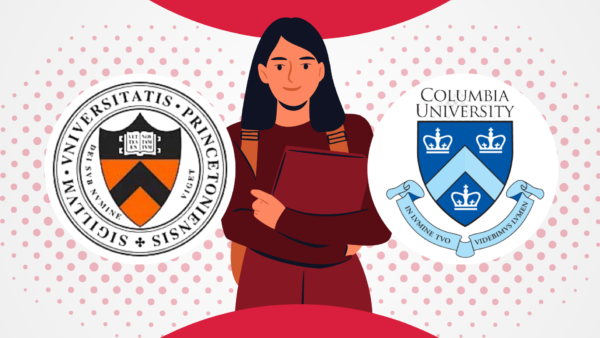
One of the significant distinctions that can make a student prefer Princeton to Columbia University, or Columbia University to Princeton is academics. The courses that they offer, the choice and flexibility made available, their academic calendars, core curricula, class sizes, research facilities and budget are key factors in your research when deciding which university is better suited to your needs.
Overall and Subject Ranking
In terms of reputation and prestige, both Princeton and Columbia belong to the Ivy League, a group of 8 private research universities (also including Brown University, Harvard University, Cornell University, Dartmouth College, the University of Pennsylvania, and Yale University) in the Northeastern United States known for their academic excellence and selective admissions. The name ‘Ivy League’ comes from the fact that these universities had a tradition of planting ivies on their buildings.
When it is a comparison of ranks between the Tigers (Princeton) and the Lions (Columbia), the Tigers pull ahead. Princeton University is ranked 1st in the country by US News and World Report while Columbia is ranked 12th. Princeton is more renowned for its courses in the sciences, mathematics, economics, political science, and engineering. The university is also particularly known for its undergraduate engineering program.
Columbia University, on the other hand, is world renowned for its programs in law, business, art history, anatomy, english literature, marine sciences, and psychology. Some of the highest ranked graduate programs are offered by Columbia’s Business School, Law School, and the College of Physicians and Surgeons.
Just by looking at the overall rank, can one choose Princeton over Columbia? Definitely not. Be it at the undergraduate or the graduate level, the subject ranking of the field of your interest carries more weight than the overall rank of the university. For instance, if you are looking for a degree in business or law, Princeton is not even a university to consider since it houses neither a b-school nor a law school. Even when it comes to life sciences and medicine, Columbia is ranked much higher than Princeton. However, if you are looking at pure sciences, engineering, maths, or most quantitative subjects, Princeton ranks higher. Columbia is better known for its social sciences, communication, journalism and other humanities.
Ultimately, both institutions foster a competitive yet collaborative environment, designed to push students towards excellence. Here is a quick comparison of the university ranks for 2024
| Princeton University | Columbia University |
| Overall National Rank US News 2024: 1 | Overall National Rank US News 2024: 12 |
| Times Higher Education WUR 2024: 6 | Times Higher Education WUR 2024: 17 |
| QS WUR 2025: 22 | QS WUR 2025: 34 |
| Subjects and Other Ranking (Source: QS and US News) | |
|
|
In comparison, both universities can confidently be referred to as two of the top tier universities in the United States, and globally. They have their clear areas of strength, with Princeton leaning towards STEM and Columbia towards the social studies, business, and humanities. While both of them are Ivies and therefore connote a certain pedigree of academic excellence, Princeton does rank ahead of Columbia, when looking at the university as a whole.
Constituent Schools
The different courses at Princeton University are offered by the following schools.
- The Undergraduate Program
- The Graduate School
- School of Architecture
- School of Engineering and Applied Science
- School of Public and International Affairs
Note that Princeton does not have a business school, law school and a medical school but is a top choice for pre-med or any of the pre-professional courses.
The schools and colleges that constitute Columbia University are
Grad Schools
- Graduate School of Architecture, Planning and Preservation
- Graduate School of Arts and Sciences
- School of the Arts
- Columbia Business School
- Columbia Climate School
- Columbia Journalism School
- Columbia Law School
- College of Dental Medicine
- School of International and Public Affairs
- Jewish Theological Seminary
- School of Nursing
- Vagelos College of Physicians and Surgeons
- School of Professional Studies
- Mailman School of Public Health
- School of Social Work
- Teachers College
- Union Theological Seminary
Undergraduate Schools
- Columbia College
- Fu Foundation School of Engineering and Applied Science
- School of General Studies
- Barnard College*
Note:
1. While looking at Columbia vs Princeton, only four colleges of Columbia University offer undergraduate degrees while the remaining award mainly graduate, professional or doctoral degrees.
2. It is important to distinguish between Columbia College and Columbia University. Columbia College is the university’s traditional undergraduate liberal arts college. Columbia University is the larger, all-encompassing institution that awards degrees.
3. The School of General Studies has been created specifically for returning and nontraditional students seeking a rigorous, traditional, undergraduate degree full or part time.
4. * – Barnard College has a unique place in the history of American higher education. It is both an independently incorporated educational institution and an official college of Columbia University. An undergraduate, women-only liberal arts college, it is fully affiliated with and located across the street from the larger Columbia University. Students from Barnard and Columbia share course catalogues, academic resources along with extracurricular activities, athletic fields, and even dining halls.
Degrees and Class Sizes
Another important factor in choosing Princeton or Columbia is the difference in size – be it in terms of student population, number of programs or class sizes.
| Princeton | Columbia | |
| Campus size in acres | 600 | 36 |
| Undergraduate Population | 5,590 | 9,559 |
| Graduate Population | 3,212 | 21,639 |
| Number of Undergraduate Options | 37 concentrations and over 50 minors | 80+ |
| Number of Graduate Options | 300 advanced degrees across 45 departments | 80+ |
| Student – Teacher Ratio | 5:1 | 6:1 |
| Classes with fewer than 20 students | Around 75% | Around 60% |
Princeton University has a much larger campus with considerably fewer students when compared to Columbia. It is also known for its emphasis on undergraduate education with faculty that are readily available to students outside the classroom for individual conferences and informal conversations. This does not mean that graduate degrees are not top notch at Princeton. Their masters’ and doctoral programs draw students for their world class facilities, stalwart faculty, and individualised attention due to a smaller student body.
In contrast, one can assume that Columbia’s emphasis is slightly more on graduate education and research. Columbia has a significant graduate population and faculty who conduct pioneering research and are at the cutting edge of their fields. This gives students the chance to learn from, and participate in innovative studies and experiments. The two main undergraduate schools of Columbia – Columbia College and Columbia Engineering – are also renowned for their core curriculum that is mandatory for all bachelor’s students. It is a curriculum specially designed to transcend disciplines and inculcate strong intellectual desires and a sense of inquiry. It lays a strong foundation for some of the most essential aspects of knowledge, including reflection and critique, that can be applied in any discipline of study.
Key Dates for Application
In this section, we will be looking at the key dates for application and admission into undergraduate programs to get a sense of the timeline. It is also recommended that you verify with the specific department / school that you are applying to, just to ensure they do not follow a different cycle.
| Important Dates | Princeton | Columbia |
| Early Action (EA) Deadline | November 1 | January 15 |
| Early Decision (ED) Deadline | – | March 1 |
| Regular Application Deadline | January 1 | May 15 |
| EA/ ED admission decisions Posted in | Mid December | Mid December |
| Financial Aid Application Deadline | February 1 | February 15 |
| Regular Decision Posted in | Late March | Late March – Early April |
| Deadline to accept offer of admission | May 1 | May 1 |
| Average Acceptance Rate | 5.7% | 3.85% |
Admission Options to be considered in the Columbia Princeton debate
1. Princeton’s EA is called Single-Choice Early Action. It is a non-binding but restrictive admission pathway. If you apply single-choice early action by the deadline, you may not apply to an early program at any other private college or university within the United States.
2. Princeton does not have the binding Early Decision college admissions pathway.
3. Columbia has both EA and ED. Columbia’s EA is non-binding and non-restrictive. EA deadlines are typically much ahead of the regular deadlines. Early Decision, on the other hand, is binding. It means students who are admitted through ED are contractually bound to enrol in the university and withdraw any other application.
4. Both Princeton and Columbia accept either the Coalition Application or the Common Application. However, the university-specific essay must be completed.
5. First year undergraduate students applying to Columbia apply to specific schools – Columbia College, Columbia Engineering or Bernard College – rather than the university in general. So it is mandatory to verify deadlines for each of these schools, depending on the programs of your choice.
6. Only women are admitted in Bernard College. It is an affiliate college and is often perceived as not a true member of Columbia. However, a degree from Bernard is signed by the presidents of both Bernard and Columbia and carries the seals of both institutions.
Semester vs Quarter
Both Columbia and Princeton follow a semester system, with the main academic calendar spreading through Fall (August/ September – December) and Spring (January – April/ May). Both universities also have a shorter summer term during which some academic activities take place.
What are the top three courses to study at Princeton?
1. Engineering
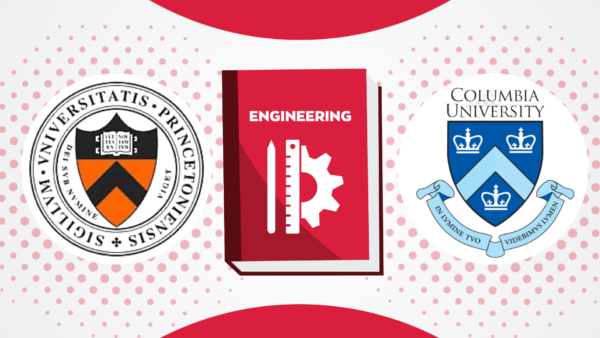
The School of Engineering and Applied Sciences (SEAS) at Princeton is one of the foremost schools for engineering and allied subjects in the world. Ranked 12th for its undergraduate engineering programs according to US News and World Report, SEAS stands 16th in the world for Chemical Engineering and 22nd in the world for its Electrical Engineering programs according to QS subject rankings. The Bachelor of Science in Engineering (B.S.E.) degree is granted by six departments: Civil and Environmental Engineering, Chemical & Biological Engineering, Computer Science, Electrical and Computer Engineering, Mechanical and Aerospace Engineering and Operations Research and Financial Engineering.
2. Computer Science
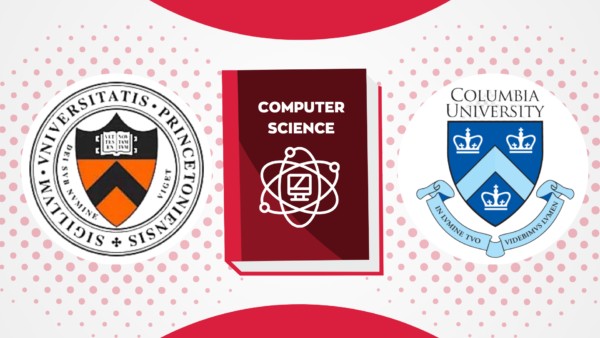
Ranked 6th by US News, the Department of Computer Science at Princeton offers some of the most sought after programs in this field of study. You can choose to pursue undergraduate degrees in the core areas of computer science and in an array of application and interdisciplinary areas. The department is known for its world renowned faculty in various areas including Machine Learning, Artificial Intelligence, Cybersecurity, Cryptography, Algorithms and more. he department has strong connections not only with the rest of engineering, but also with public policy, maths and the Institute for Advanced Study, neuroscience, genomics, art and architecture, and so on.
3. International and Public Policy
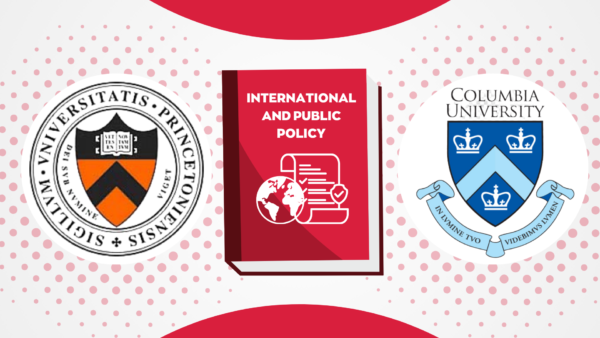
In spite of Princeton’s international renown for engineering and STEM-related subjects, the university is also known for its undergraduate programs in the social sciences, especially courses relating to international and public policy. In fact, the university ranks 4th in the world for political science related subjects, according to the 2024 QS subject rankings. The School of Public and International Affairs offers many multidisciplinary liberal arts majors. The school is also known for its international programs, with one of their partner institutions being Pembroke College at the University of Cambridge in the UK.
What are the top three courses to study at Columbia University?
1. Social Sciences
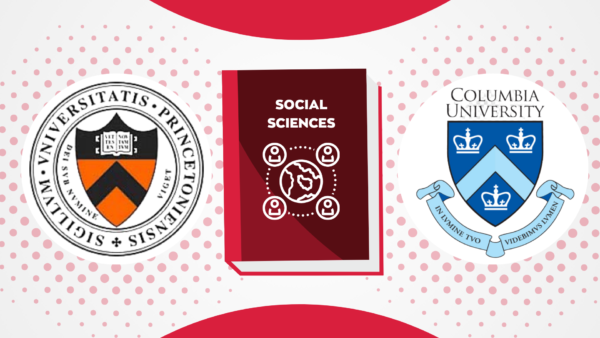
Ranked 11th in the world for Social Sciences by QS Subject Rankings, these programs at Columbia College will help you gain invaluable skill sets like research and data interpretation skills, critical thinking and analysis skills, and learning how to organise tasks and information. Bachelor degrees in social sciences at Columbia include specializations such as Behavioural Science, Community and Organisational Leadership, Criminal Justice, Forensic Psychology, Psychology and Social Work. In fact, Columbia is one of the top 10 universities in the world for the study of psychology, ranked ahead of UC Berkeley, NYU and Princeton.
2. Engineering

While not ranked as highly as MIT or Caltech, the Fu Foundation School of Engineering and Applied Science offers some of the top courses in Columbia University. Guided by the school’s vision that emphasises on “engineering for humanity”, this school provides a highly collaborative and interdisciplinary foray into the world of engineering at the undergraduate, graduate and doctoral levels. The university’s computer science and computer engineering program is top notch and the financial engineering degree at the graduate level attracts people from all over the globe.
3 Business and Management Studies
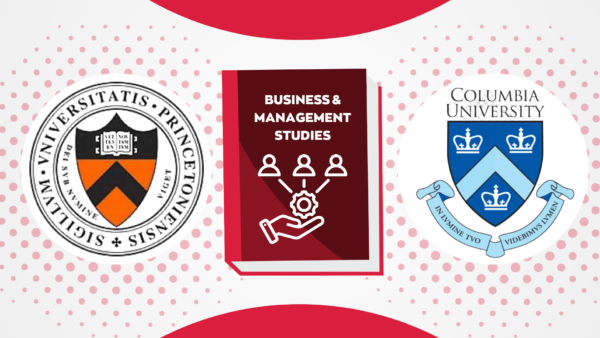
Ranked 7th in the world for its MBA programs and 20th overall for the study of Business and Management by QS Rankings, the Columbia Business School is one of the premier b-schools in the country. While focussing primarily on graduate study, the b-school does offer an undergraduate business management concentration that brings together the theories of management with the practices of the real world. Columbia b-school alums have founded 726 startups in the last decade and 95% of them are employed within 3 months of graduation.
Notable Faculty, Alumni and Research Facilities
Both Princeton and Columbia have a long list of illustrious alumni that include former presidents, Nobel laureates, McArthur fellows and numerous other distinguished scholars.
Number of Nobel Laureates associated with Princeton: 79
Number of Nobel Laureates associated with Columbia: 103
Some Notable Alumni from Princeton
- Aaron Burr
- Richard Feynman
- Jeff Bezos
- Michelle Obama
- Woodrow Wilson
- F Scott Fitzgerald
- Alan Turing
- Sonia Sotomayor
- John Forbes Nash Jr
Some Notable Alumni from Columbia
- Lou Gehrig
- Theodore Roosevelt
- Franklin D Roosevelt
- Dwight Eisenhower
- Barack Obama
- Allen Ginsberg
- B R Ambedkar
- Langston Hughes
- Jack Kerouac
Both are world-class R1 research universities that allocate significant amounts for research. Princeton receives nearly $400 million in research funding annually while Columbia allocates over $1 billion. Both universities house some of the top research centres and laboratories in the world, for various areas of study. The Princeton Plasma Physics Laboratory (PPPL) and the Columbia Irving Medical Centre are just two examples of cutting edge research facilities that attract scholars from all over the globe.
| Academics – Key Similarities and Differences |
| 1. While both universities are part of the prestigious Ivy League, Princeton is more known for its engineering and STEM-centric programs while Columbia is better known for business, law, social sciences and humanities programs. Princeton does not have dedicated schools for business, law and medicine.
2. In terms of student population, Princeton is significantly smaller than Columbia, despite having the larger campus. Columbia has more graduate students to undergraduate students, when compared to Princeton. 3. Despite being a world-class research university with cutting edge facilities, the academic culture of Princeton focuses on undergraduate teaching. In contrast, Columbia is better known for its research and graduate teaching. 4. Both universities follow an academic calendar that is divided into semesters. 5. Columbia has a slightly lower student to faculty ratio when compared to Princeton. 6. Both schools offer numerous study abroad options that allow students to attend a semester or a year abroad. 6. Both schools offer compulsory core curriculum for students of all majors to build an intellectual foundation and develop well-rounded skill sets. Both these Ivies have an in-depth liberal arts based core curriculum that inculcate interdisciplinary interests and critical thinking. |
Princeton vs Columbia: Fees and Scholarship Opportunities

After academics, the next important distinction that will help you decide when it comes to the Columbia University vs Princeton debate is the finance involved. The cost of attendance (tuition), additional expenses such as books, student fees, insurance and housing must be taken into account before making a choice.
Since both universities are privately owned, they do not offer subsidised tuition rates for in-state students like the other American public universities. Here is a table that will help you compare these two top universities in the matters of fees and scholarships.
| Annual Rates | Princeton | Columbia |
| Tuition (Bachelor’s) | $62,400 | $68,400 |
| Average Tuition (Master’s) | $59,710 | $66,139 |
| MBA Tuition | N.A. | $84,496 |
| Housing | $11,910 | $11,000 – $12,222 |
| Types of Financial Aid | 1. Federal Pell Grant (FAFSA) 2. Federal Supplemental Educational Opportunity Grant (FSEOG) 3. New Jersey Tuition Aid Grant (TAG) 4. Other State Grants 5. Princeton University Grant 6. Outside Scholarships 7. Student Employment 8. Federal and Institutional Loans |
1. Columbia Grants 2. Federal Grants 3. State Grants 4. External Scholarships 5. Student Employment 6. Loans |
| International student scholarships |
|
|
| Estimated average grant for an aid student | $70,500 | $71,043 |
| Admission Decisions | Completely need-blind | Need aware for international students |
| Demonstrated Need Cover | 100% (Families with income less than $160,000 will not have to pay tuition) | 100% (Families with income less than $150,000 will not have to pay tuition) |
| Percentage of undergraduates who receive financial aid | ~ 67% | ~ 50% |
Note:
1. The tuition fees are average figures, calculated for a typical academic year of 9 months. The fee will be higher should you choose to take extra courses in the summer months.
2. The tuition fee amounts in the table are indicative of only the cost of attendance. It does not include books, student health insurance and other expenses. Student insurance alone can cost between $3,000 – $7,000 a year.
3. Both the Ivies are committed to providing need-based aid/ grants to as many students as possible. Any financial aid that is aid funded directly by Princeton University or the University of Columbia is awarded only on a need basis. However, you can look into external scholarship options if you are looking for merit scholarships.
Princeton vs Columbia: Student Life and Post-Graduation Opportunities
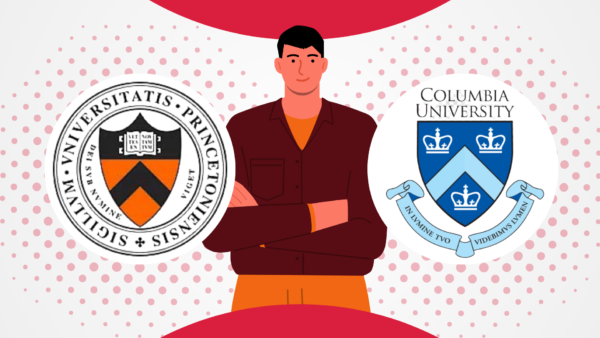
Besides academics and finance, there are other significant differences that can make a student prefer Princeton University to Columbia University, or Columbia University to Princeton University. The university’s location, campus life, and the extracurricular activities available can also become important points of consideration, especially if the universities are otherwise well matched. So, here are a few other factors that will help you decide “Is Princeton or Columbia better?”.
1. Location
One of the differences that can play a significant role in choosing between these two universities is their location. Princeton is located in the small, quaint, picturesque, suburban town of Princeton in New Jersey while Columbia is located in the ultra-urban bustling borough of Manhattan in New York City.
While both campuses are beautiful in their own regard with historic and modern buildings and extensive lawns, it comes down to one’s personal choice if they prefer the energy and bustle of New York to the suburban traditional campus experience of Princeton.
There are pros and cons to both. Columbia’s location in what is considered one of the greatest cities in the world provides its students with endless opportunities for cultural experiences, social life, and networking which can also translate to internships. However, the cost of living and the pace of New York can become overwhelming for some.
If you prefer the quieter suburban town for a more traditional college experience, then Princeton is the way to go. In fact, if you are asking the question, “How far is Princeton University from Columbia University?” you will realise that there are only about 62 miles (one-and-a-half-hour drive) between the two universities. This might also factor in your decision to choose the suburbs, while exploring the benefits the city has to offer.
2. Campus
Princeton:
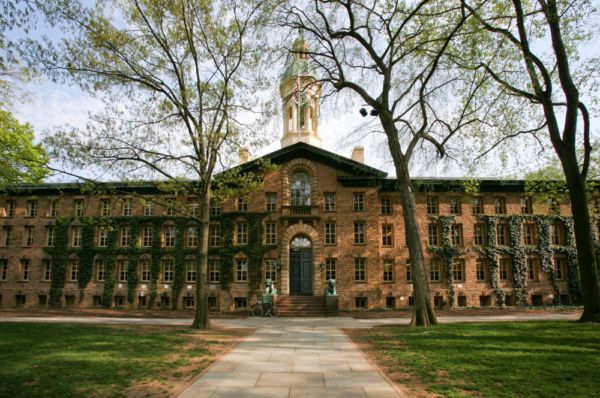
Source: Princeton
With a history that can be traced back to 1746, the Princeton campus was originally established in Elizabeth, and later in Newark, before moving to Princeton in 1756. Today, the central campus consists of about 200 buildings in 600 acres of university land. The university also owns over 2,000 acres in the town of Princeton, Plainsboro Township and the West Windsor Township to accommodate undergrad and grad students, along with faculty and non-teaching staff.
Despite its size, the Princeton campus enables a close knit community by providing a more intimate setting for students to interact with one another. The campus vibe reflects the suburbian peace and quiet, despite having a flourishing culture of sports and extracurricular activities.
Columbia:
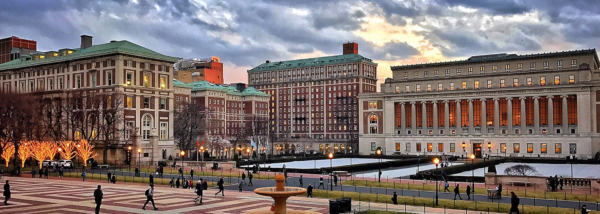
Source: Columbia University
Columbia University has a dedicated campus on the island of Manhattan. The main campus located in Morningside Heights spans 32 acres and houses most of the academic premises. The university also owns a number of residential complexes in the vicinity to house faculty, graduate students and staff. Several buildings on campus are included in the National Register of Historic Places. The Low Memorial Library and the Union Theological Seminary are known for their architectural significance.
The bustle of NYC is reflected in the campus vibe as the university provides a competitive and vibrant space for students to interact, network, and grab the best opportunities that New York City has to offer. With a beautiful, walkable campus, Columbia University provides a world-class education while being tucked away in a quiet residential corner of one of the greatest cities in the world.
3. Student Population
Princeton: The total student population of Princeton is around 8,800 with around 5,590 bachelors’ degree students and 3,212 grad students. In terms of gender, the student population is 51:49 women to men. Here is a break up of the student body by race/ethnicity.
- Caucasian: ~ 32%
- Asian American: 26%
- International students: 14%
- Hispanic/ Latinx: 10%
- African American: 9%
- Multiracial: 7%
- American Indian or Alaska Native: <1%
- Native Hawaiian American or Other Pacific Islander: <1%
Columbia: When compared to Princeton, Columbia has a significantly higher student body, at both the undergrad and graduate level. 9,559 students were enrolled in both full-time and part-time bachelor’s programs. At the graduate and professional level, there were 21,639 students enrolled in Columbia as of Fall 2023. A total of 51% of the university’s student population is composed of ethnic and racial minorities, and around 39% is made up of international students. The university maintains a student-to-faculty ratio of 6:1.
4. Housing
Princeton: Princeton has 7 residential colleges for undergraduate students and dedicated graduate housing as well. While all undergrads are offered only dorms, there are a limited number of apartment options for graduate students with families.
First and second year students are required to live in one of the residence halls after which they are allowed to live off campus. Despite this provision, around 98% of Princeton undergraduates and around 70% of graduate students choose to live on campus. The residential college system at Princeton has been designed to support and advise students in an individualistic manner through dedicated staff.
Columbia Residential manages 150 apartment buildings, most of which are concentrated in the neighbourhoods of Morningside Heights, Manhattan Valley, and Manhattanville, making them within walking distance from the academic blocks. Standard student housing is either a dorm or an apartment shared among two or three students. However, the university does have a limited number of studios, one-bedroom, and two-bedroom apartments specifically allocated for students with dependent children.
Students enrolled in the Law School, the Graduate School of Arts and Sciences, and the School of General Studies are usually accommodated in dedicated residence halls meant for these schools. Students enrolled in executive programs are not eligible for housing. Undergraduate housing is guaranteed for all four years at Columbia, and nearly 90% of students live on campus for all four years of study.
5. Sports and Extracurriculars
Princeton: Princeton has one of the largest and most successful athletic programs in the NCAA Division I and the Ivy League. The Princeton “Tigers” is composed of 37 varsity men and women’s teams, made up of about 18% of the university’s undergraduate population. In addition, as a Tiger, you can join any of the 39 sports clubs available on campus.
Besides sports, the university has over 500 student organisations, run by students. The John H. Pace Jr Centre for Civic Engagement also offers a number of opportunities for students to get involved in the local Princeton community and beyond. The Undergraduate Student Government at Princeton also enables students to sharpen their leadership skills and expand their horizons.
Columbia: Referred to as the “Lions”, Columbia has a longstanding tradition of achievements in athletics. The Lions have 31 NCAA Division I varsity teams and over 40 intramurals and club sports. They have also celebrated over 120 Ivy League championships.
In addition to athletics, the university enables over 500 student clubs, organisations and teams, over 40 social justice and service initiatives and over 70 opportunities for arts and performances. Besides academics, Columbia is the place where you can explore anything you love.
6. Internships
In both schools, the career cell is the ideal place to begin your research for internships in any location. With internships, you can gain more credits, boost your resume and experience the real-world demands of your profession. While listings are available throughout the year, it is expected that you plan your internships around your coursework.
Columbia College, The Fu Foundation School of Engineering and Applied Science and the Columbia School of General Studies generally do not provide credit for internships. At Princeton, the Internship Milestone Credit provides an opportunity for students in certain specific departments to receive academic credit for specific summer internship experiences. However, it carries only academic credit and not course credit. Therefore, it does not count toward the course credits required for graduation.
7. Employability
Princeton: Times Higher Education ranked the university 6th in the world for graduate employability for the year 2023-24. Typically, around 93% secure their post-graduation outcome within six months of graduation, be it employment or further education. Princeton University’s reputation easily opens doors for its graduates across all industries.
Columbia: With a graduate employability rate of over 93%, most Columbia graduates receive job offers within 4 months of graduation. The reputation of Columbia University opens up numerous opportunities for graduates across disciplines. The academic pedigree of the institution typically allows its graduates to be recruited at much higher salaries than most other universities.
Summary
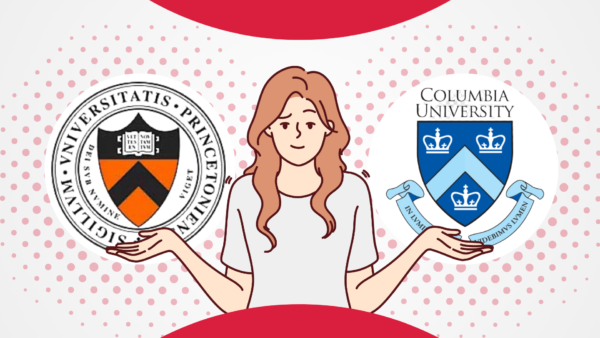
Deciding on Princeton vs. Columbia is not a simple task. Both are highly reputed schools, highly selective, and have their signature academic programs. That said, here is a summary of the differences.
Columbia is better suited if
- You are looking for a university with high metrics, a member of the prestigious Ivy League, and a world leader in almost all disciplines.
- You can keep up with the academic rigour and then reap the benefits of the Columbia name in your career.
- You are looking for a highly reputed business, medical or law school.
- You would enjoy studying in a campus that is a world in itself, amid the bustling city of New York.
- You prefer small classes with a student-to-faculty ratio of 6:1.
- You want to avail their numerous need-based financial aid options.
- You prefer staying in dorms/ in-campus housing (You have the option of staying outside but the smaller student body allows for more students to stay on campus for the entire duration of study.)
Princeton is what you must look into if
- You are keen on studying in one of the top-ranked universities in the country, globally renowned for its academic excellence, especially in STEM and allied fields.
- You are looking at a university with one of the finest systems for undergraduate education.
- You prefer studying in a relatively large campus with fewer students and therefore get more individualised attention. Princeton’s student-teacher ratio is around 5:1, with over 75% of classes having fewer than 20 students.
- You want to remain accessible to everything New York has to offer, while enjoying the quiet charm of Princeton town, New Jersey.
- You want to live in one of Princeton’s residential colleges that enable its residents to form small communities and long-lasting friendships.
- You want to avail their numerous need-based financial aid options.
While these can be factored into your decision, the ultimate call rests on whether the course curriculum and the learning outcomes meet your career plans. The most significant part of your research is to compare courses, syllabi, electives, faculty and research facilities of your preferred degree program, speak to current students, and then decide depending on which school better suits your needs.
We understand that becoming an international student can be very thrilling, but the prep and paperwork of it all can get overwhelming. The easiest way to reduce your stress is to sign up with TC Global.
We simplify international education, learning, and mobility through connecting students, universities, and a global community on a single platform where there are over 1000+ education providers and over 80,000+ courses.
Our platform enables students to study anywhere in the world in just a few steps. From search and discovery and finding the right course fit for you, to applications, visas and departure – we see you through it all.
To move forward with us, download our app or visit tcglobal.com and sign in to create an account on our student platform and onboard with us in quick, easy steps.! 🚀
Then simply set up a visit Calendly.com/tcglobal to pick a Relationships Team closest to you and choose a slot to meet with a Relationship Member. Be it Princeton vs Columbia or any such debates, our experts will be with you every step of the way to help you decide.
Let’s shape your future together.
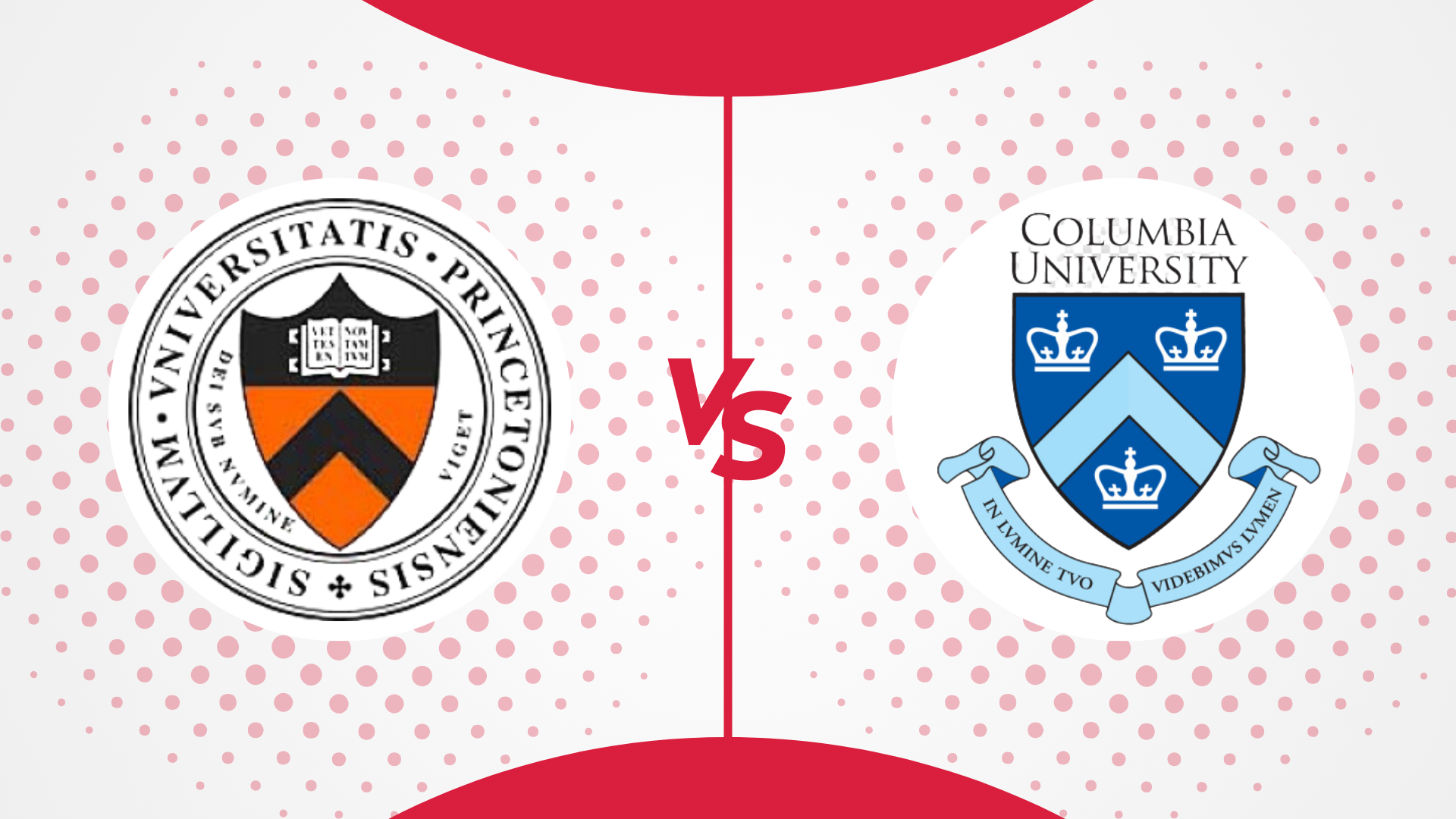
Compare more universities in USA
-

Purdue vs UIUC: How Do They Compare in 2025?
December 16, 2024 -
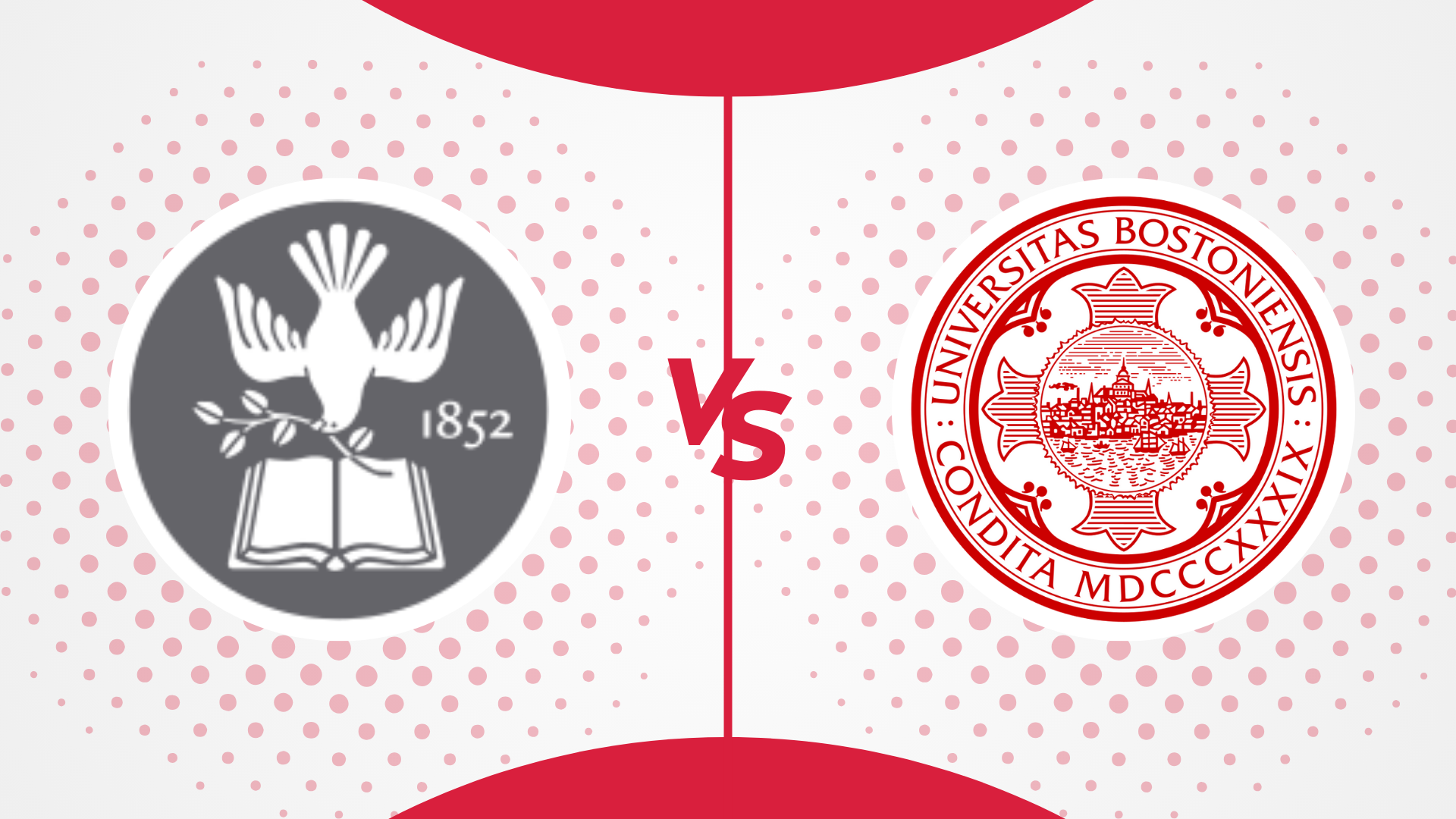
Tufts vs BU: How Do They Compare in 2025?
December 16, 2024 -

UIUC vs Georgia Tech: How Do They Compare in 2025?
December 3, 2024 -

Georgia Tech vs UT Austin: How Do They Compare? [2025]
September 24, 2024 -

UC Davis vs UC Irvine: How Do They Compare in 2024
September 10, 2024 -
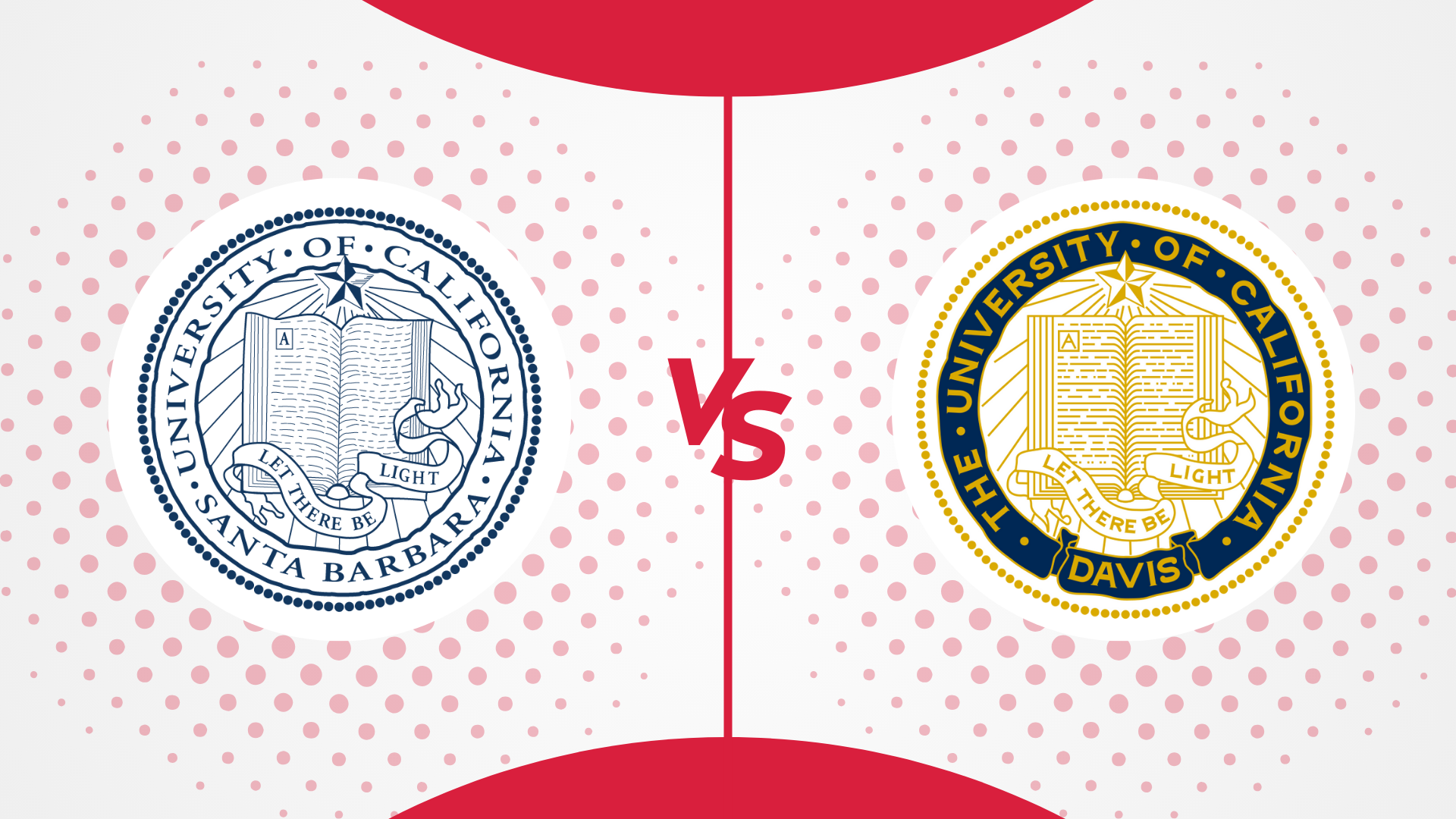
UC Santa Barbara vs UC Davis: How Do They Compare? [2024]
August 30, 2024 -
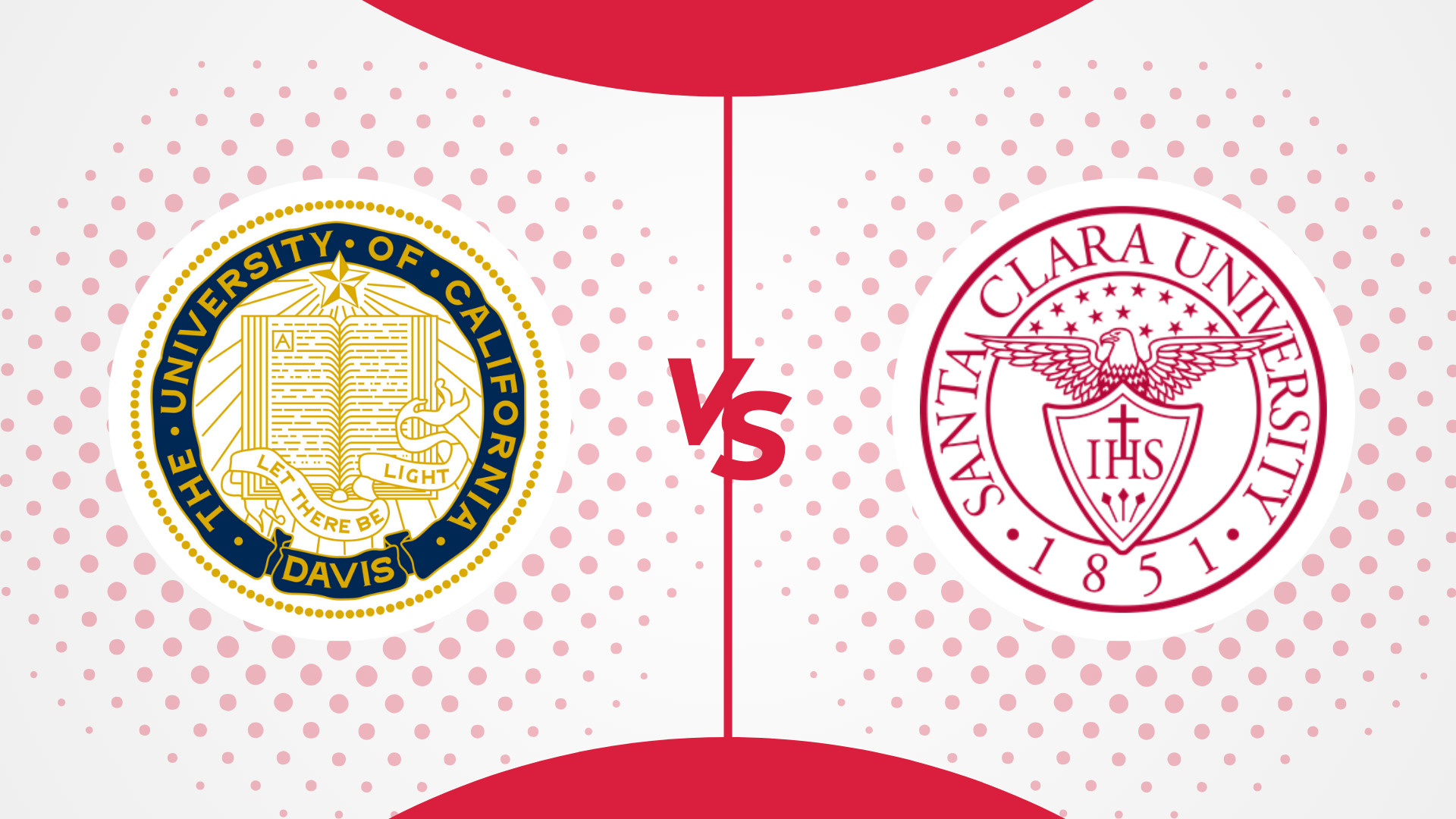
UC Davis vs Santa Clara University: How Do They Compare? [2024]
August 23, 2024 -

University of Chicago vs Northwestern University: How Do They Compare
August 20, 2024 -

Georgia Tech vs MIT: How Do They Compare? [2024]
August 7, 2024 -

Caltech vs MIT: How Do They Compare [2024]
August 2, 2024 -

MIT vs Harvard: How Do They Compare [2024]
July 27, 2024 -

Cornell vs Harvard: How Do They Compare? [2024]
July 27, 2024 -

Yale vs Harvard: How Do They Compare [2024]
July 22, 2024 -

Harvard vs Princeton: How Do They Compare [2024]
July 16, 2024 -
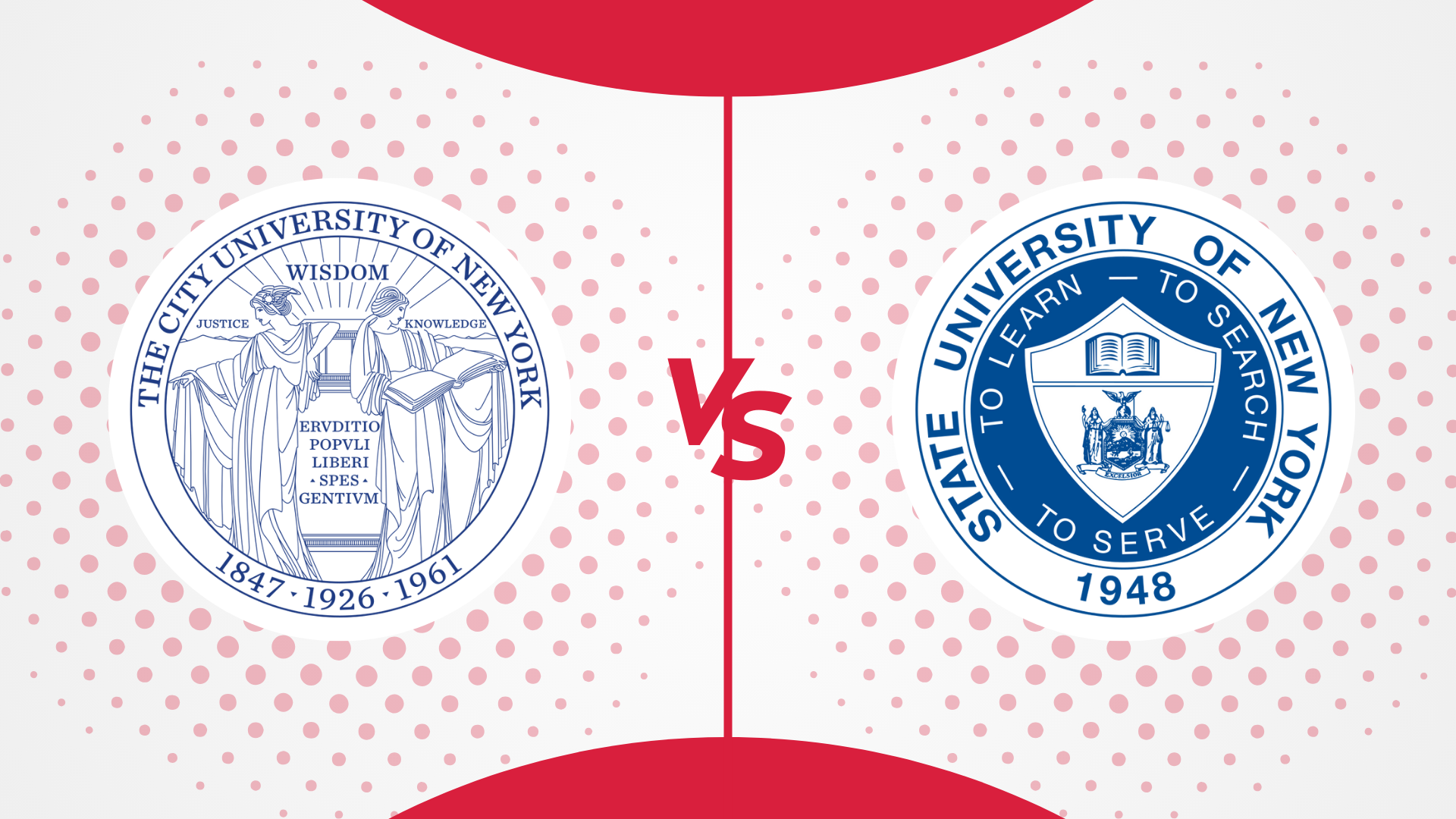
CUNY vs SUNY: Which One is For You in 2024
July 9, 2024 -
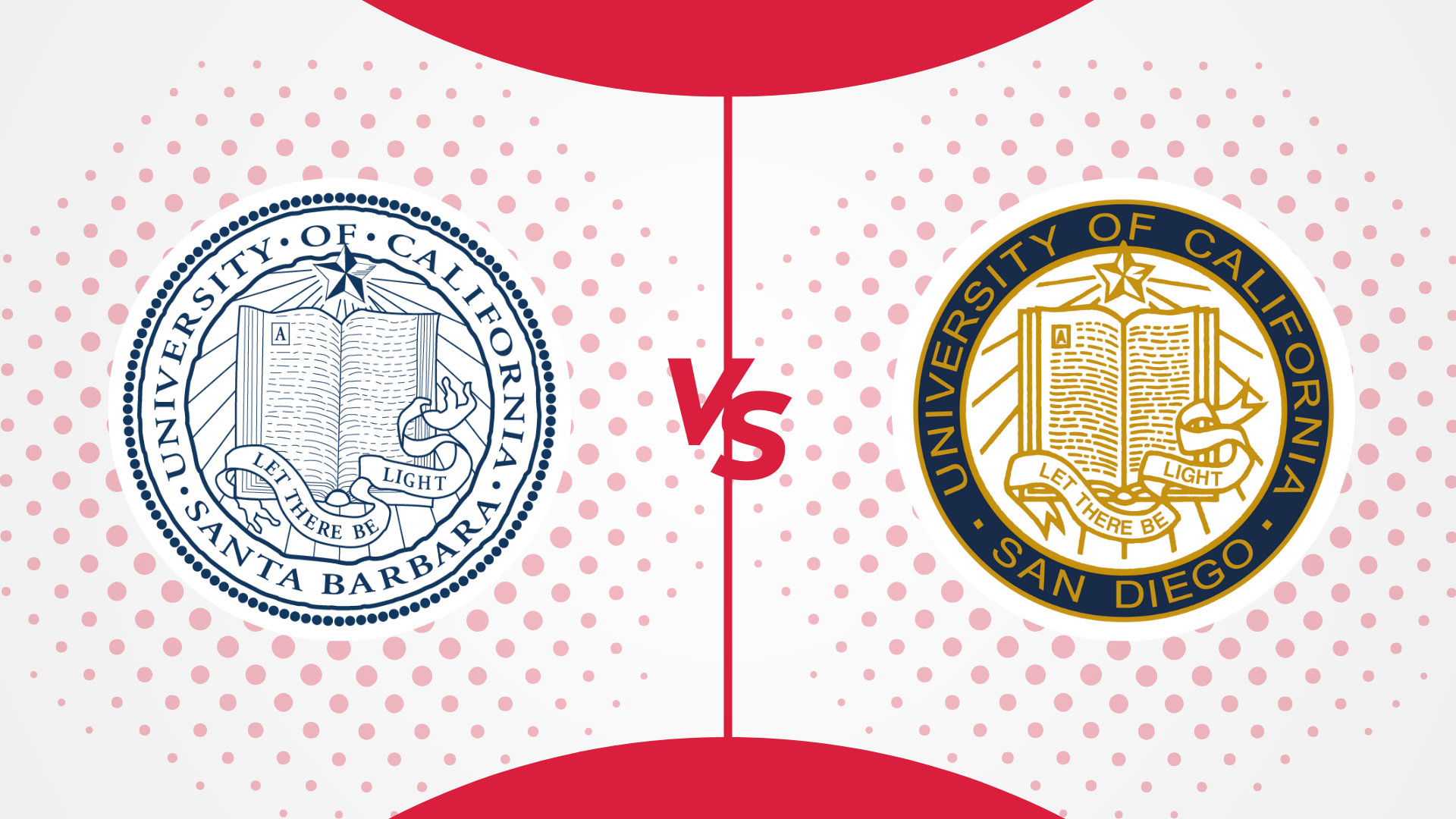
UCSD VS UCSB: Which One is Better For You in 2024
July 9, 2024 -
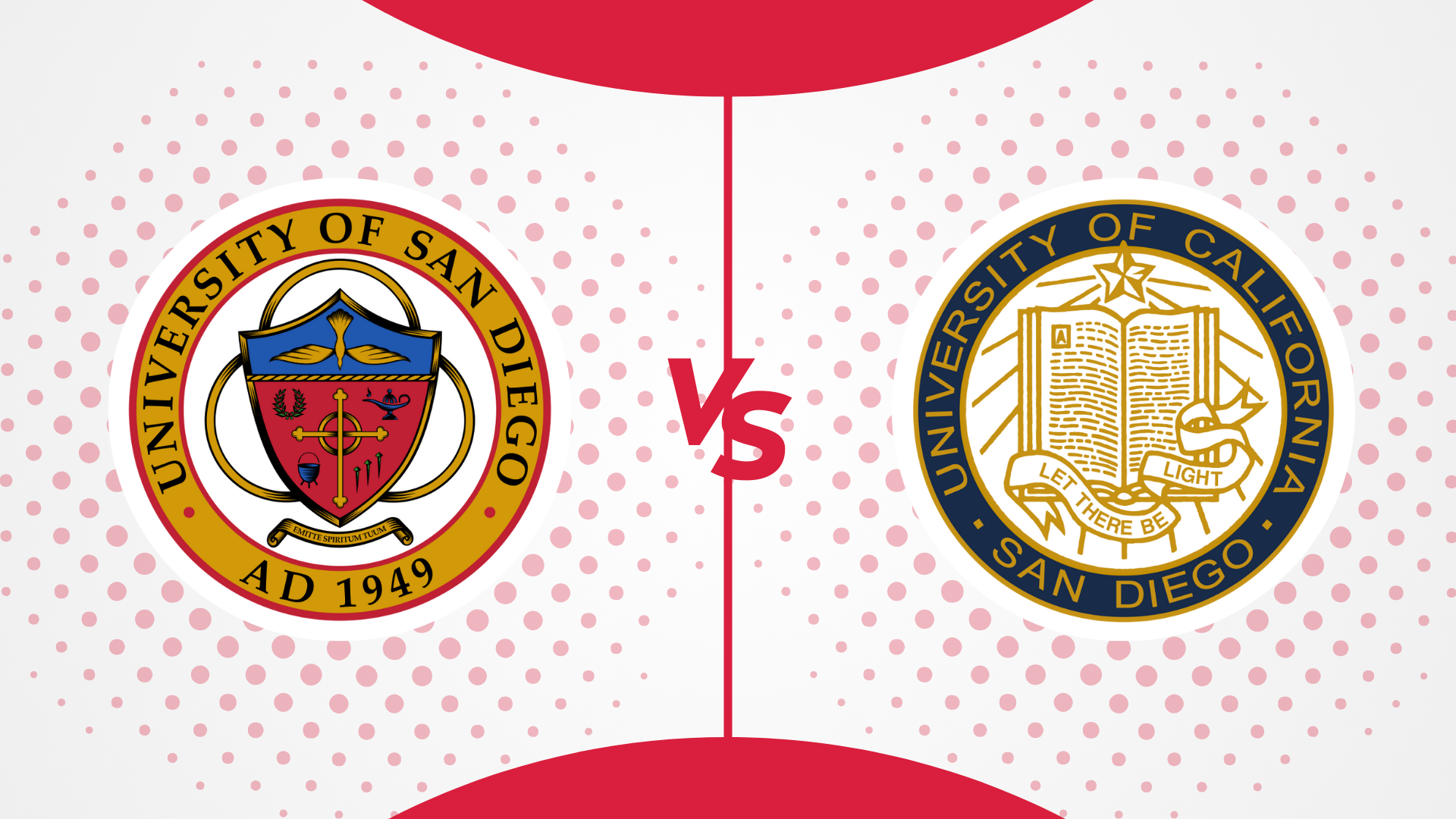
USD vs UCSD: Which one should you choose in 2024?
July 9, 2024 -

UC vs CSU: Which One is Better in 2024?
July 9, 2024 -
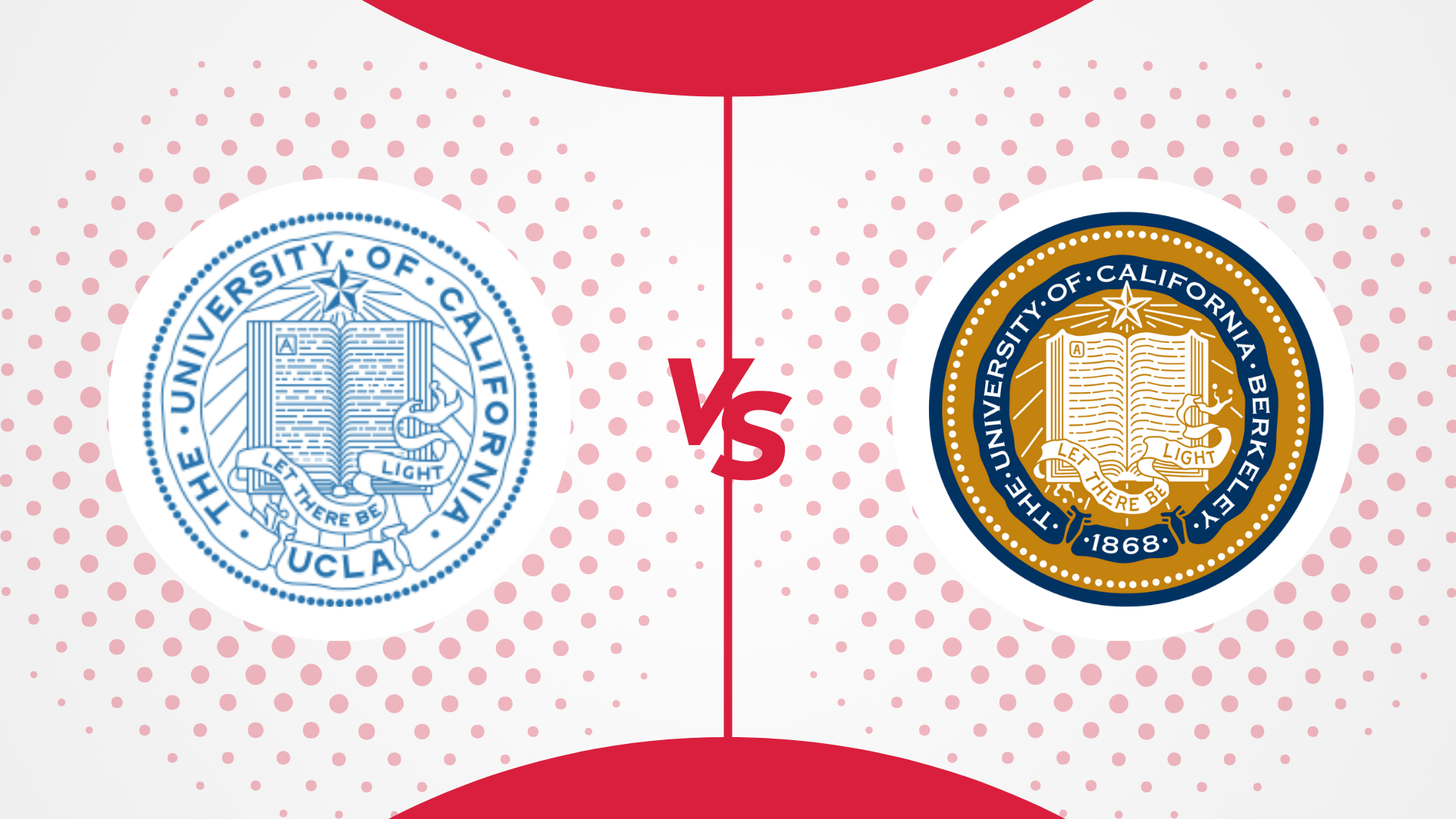
UCLA vs UC Berkeley: Which One is Best in 2024
July 9, 2024 -

University of Arizona vs Arizona State University: Which One is Better in 2024
July 9, 2024 -

Penn State vs UPenn: Which is Better for International Students in 2024
July 9, 2024 -

Northeastern vs Northwestern: Which One is Best in 2024
July 9, 2024 -

Northeastern University vs Purdue University – Which One is Better in 2024?
July 9, 2024 -

Boston College vs Boston University: Which One is the Best in 2024?
July 9, 2024 -

LSU vs UCLA: Which Is Better For You In 2024?
July 8, 2024 -

NYU vs Boston University: Which One Is Better For You In 2024
July 8, 2024 -

USC vs UCLA: Which One Is Better For You In 2024?
July 5, 2024 -
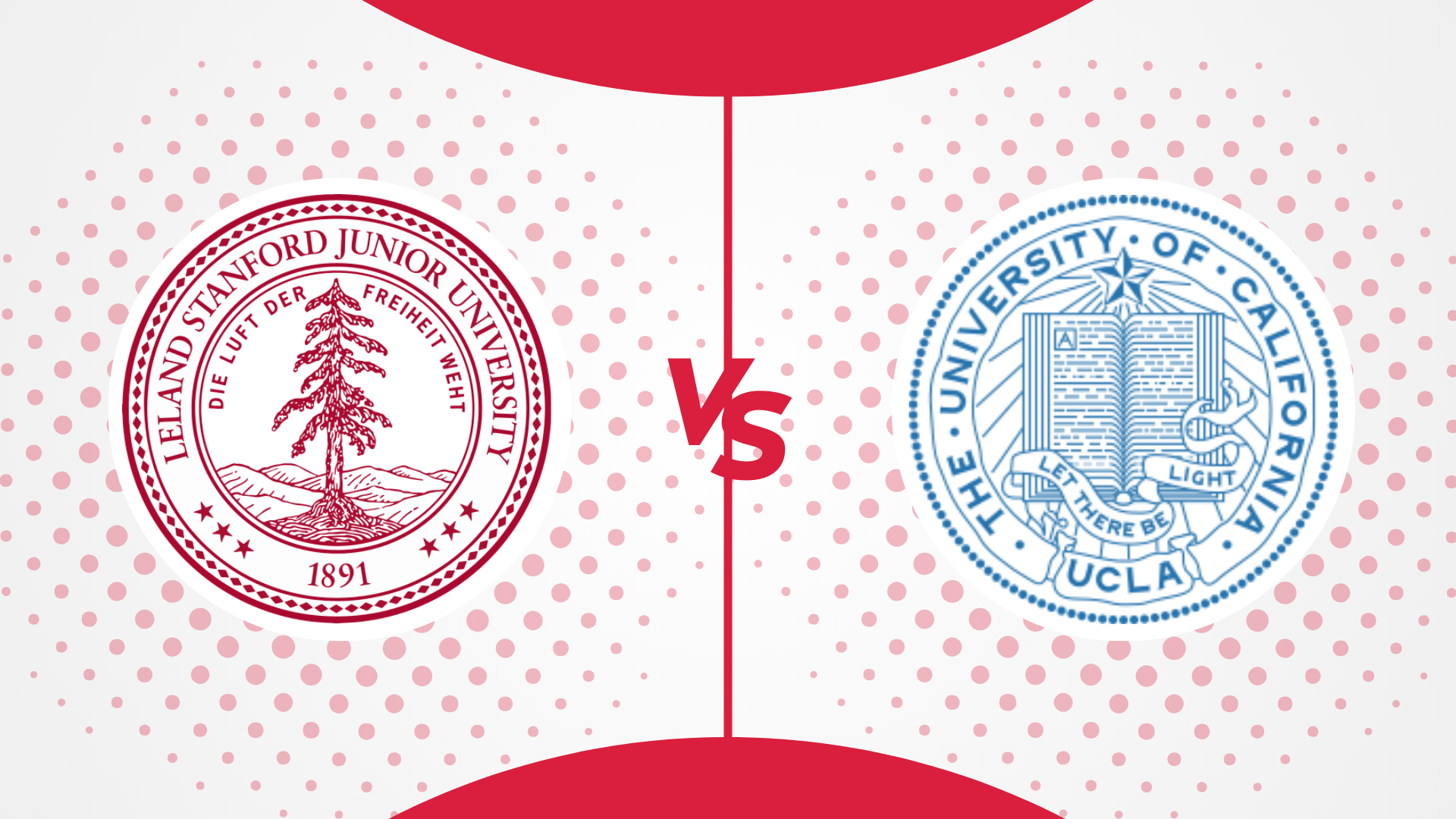
Stanford vs UCLA: Which One is Better For You in 2024
June 28, 2024 -
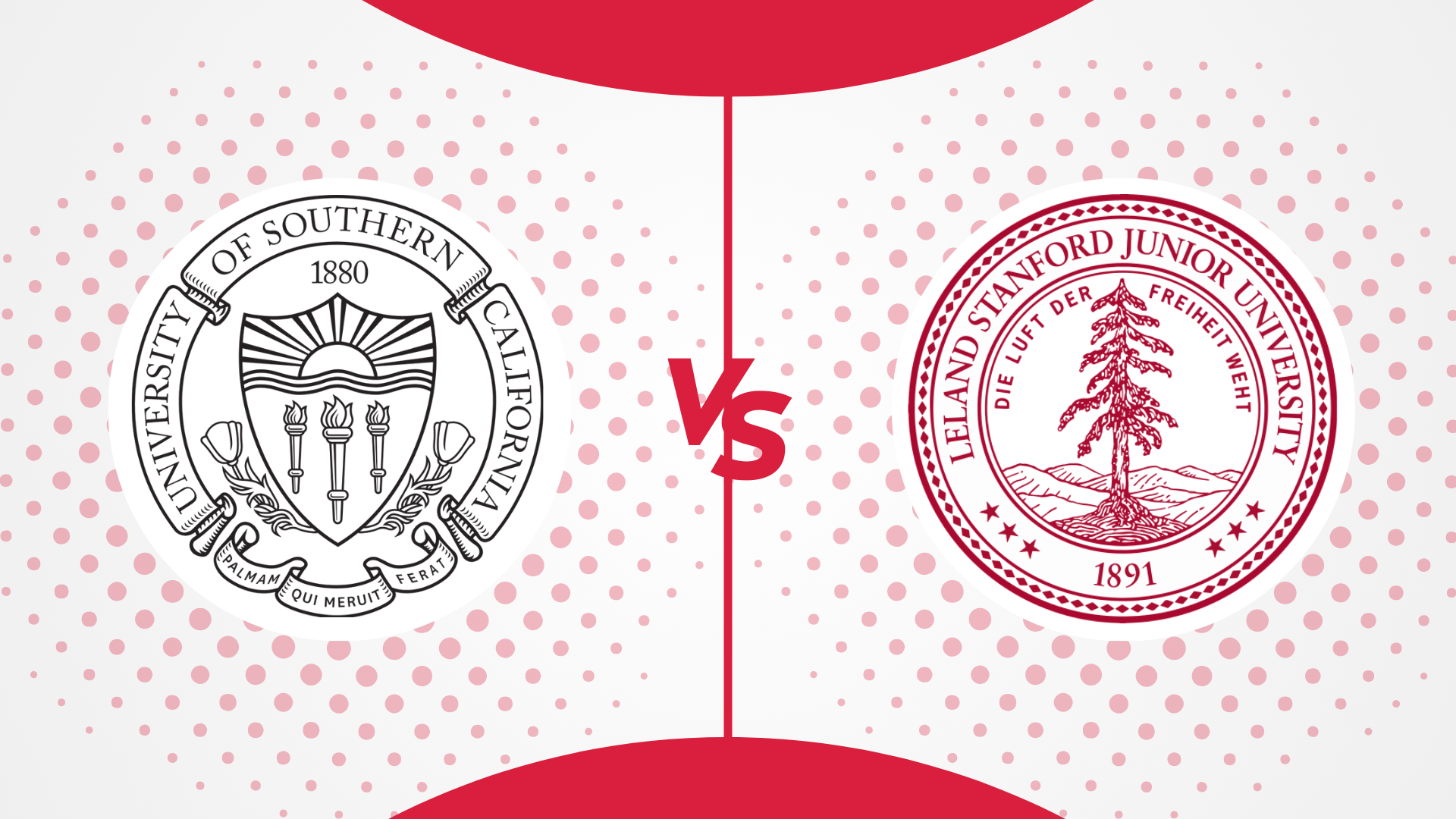
USC vs Stanford: Which One is Better For You in 2024
June 28, 2024 -
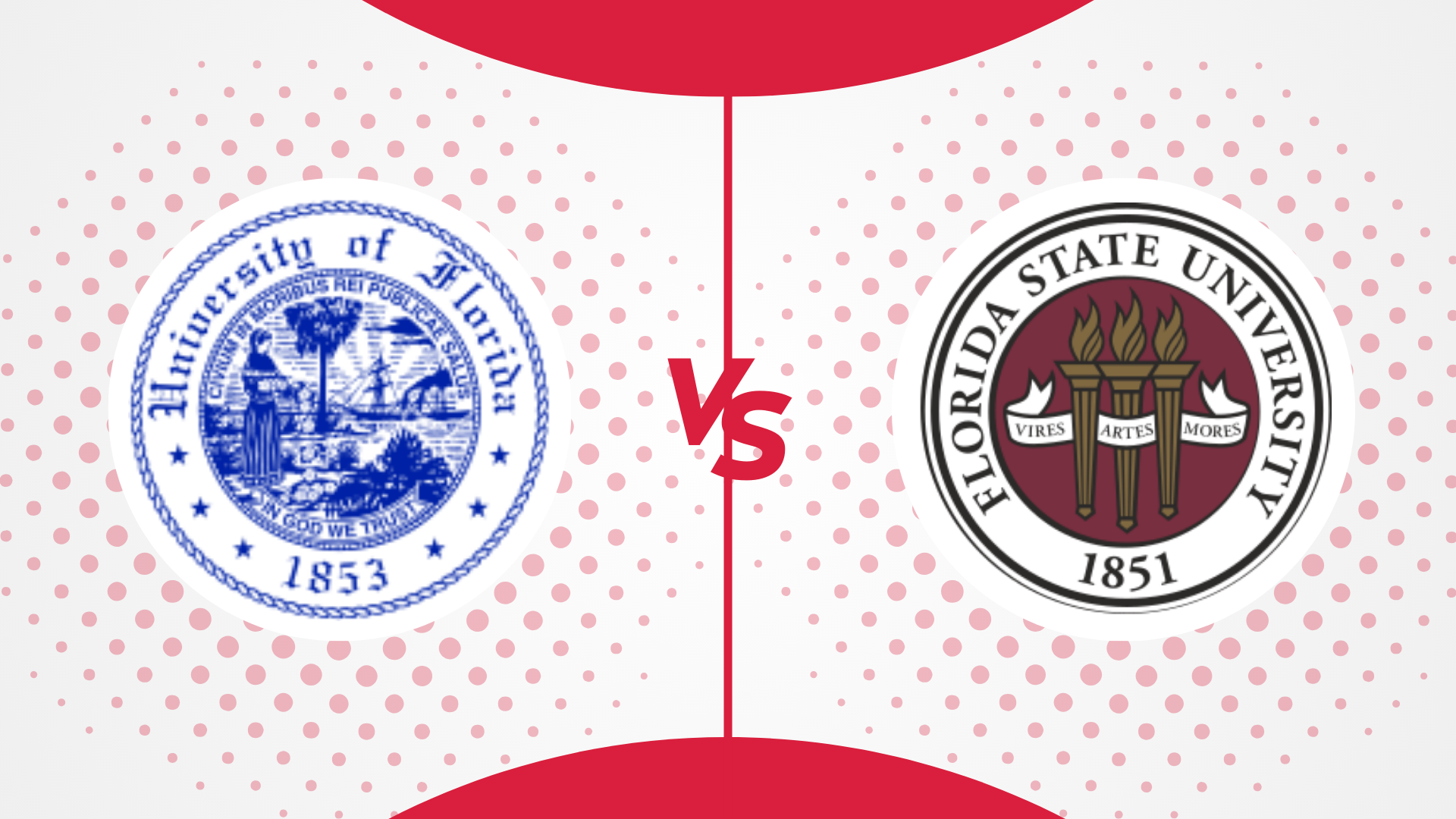
University of Florida vs Florida State University: Which One is Better For You in 2024
June 28, 2024 -

NYU vs Columbia: Which Is Better In 2024?
June 28, 2024 -

NYU vs Cornell: Which One Is Better In 2024?
June 28, 2024 -

Boston University vs Northeastern: Which one is best in 2024
June 28, 2024 -

NYU vs UCLA: Which Is Better For You In 2024?
June 28, 2024
